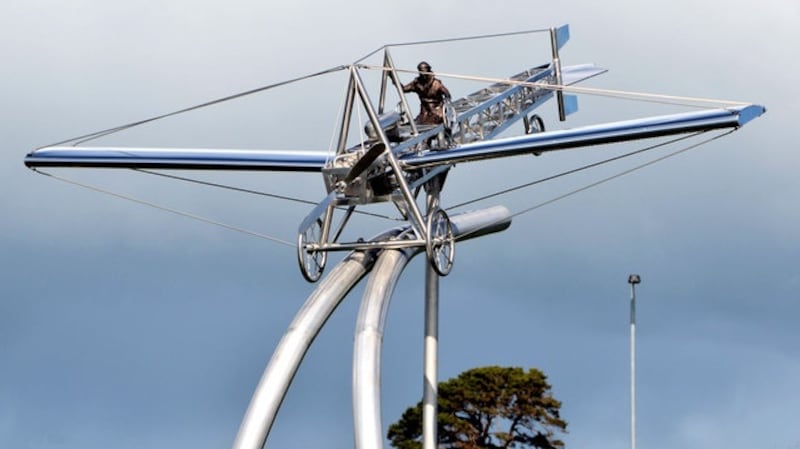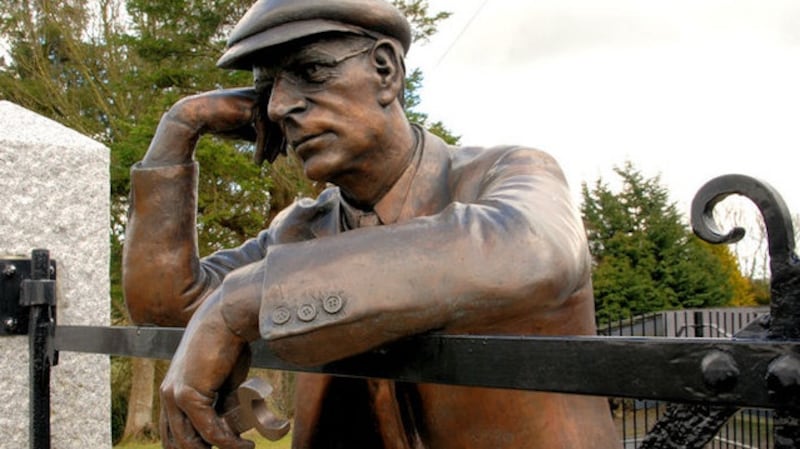When exploring the stories of Irish innovators in times gone by, it’s easy to see a pattern emerge of well-educated ascendancy sons pioneering new ideas - figures such as engineer and inventor of the steam turbine Charles Parsons, and Hans Sloane, the doctor whose collection formed the basis of the British Museum. But Irish emigrants at all levels of society contributed their passion, energy and ideas to the world stage, and continue to do so to this day.
One such innovator from a less lofty background was Harry Ferguson, of Massey Ferguson fame.
Born Henry George Ferguson in 1884 in Dromore, Co Down, Harry Ferguson was a middle child, and something of a rebellious spirit. His early life was defined by his work on the family farm. Although the family were well-off, he left school at 14.
While dedicated to farm work, tension between him and his strict father meant the arrangement couldn’t last; he soon went to Belfast to work in his brother Joe’s garage. He attended evening classes in Belfast and began to race motorbikes to advertise his brother’s business, a practice that would earn him his “mad mechanic” moniker.
Ferguson became fascinated by the evolution of flight, and determined to build and fly his own plane. He and Joe worked on the development of the Ferguson Monoplane, based on information compiled from aviation shows and found in the magazine Flight.

On December 31st, 1909, Ferguson became the first person in Ireland or Britain to build and fly his own plane. But the process wasn’t without its difficulties and in 1911, the brothers had a falling out, which led to Harry going it alone.
Farming roots
May Street Motors, later Harry Ferguson Ltd., brought Ferguson back to his farming roots, designing machines that would replace the manpower lost to farmers during the first World War. His falling out with his brother Joe didn’t outlast his passion for flight, and soon the brothers were working together again.
Work on some innovative new designs was hampered by production difficulties during the war, but these challenges were to go on to inspire Ferguson’s most lasting contribution.
As a motor salesman, Ferguson showcased early American-made tractors to large crowds, but in doing so, saw the shortcoming of the contemporary model of plough attachment, noting that they were based on a horse-drawn system rather than responding to the innovation of motor power. Tractors were also likely to capsize if the plough became trapped in the soil.
Ferguson began trialling new kinds of implements and attachments, always bearing in mind his own background on a 100 acre farm - a style of farming of a far smaller scale than the great plains of America. He met with Henry Ford, who was impressed enough by his ideas to offer him a job, but not to invest.
Ferguson decided instead to work with Americans George and Eber Shearman, developing new ploughing attachments. During this time Ferguson made an important breakthrough, which he patented in 1926; the invention of a hydraulic system that allowed the farmer to change the height of the plough.

Ford deal
In the 1930s, Ferguson struck a verbal deal with Henry Ford, allowing for the production of 300,000 tractors between 1938 and 1947. From 1946, Ferguson worked with the Standard Motor Company in Coventry to produce the line of tractors that would become world famous - the TE, or “the wee grey Fergie”.
Despite his success, on the death of Henry Ford in 1947, the verbal agreement the two men had struck was challenged by Henry Ford II, leading to the loss of millions by Ferguson. The legal process that ensued was long and complicated, leaving Ferguson with a settlement, but far less than he had sought. In 1953, Ferguson sold his companies to Massey-Harris, who became the Massey-Ferguson brand still known today.

In later life Ferguson continued to innovate, developing the four wheel drive system that would later be used in Formula One racing. A determined and idealistic man, his drive in inventing had always been to improve the lot of the small farmer. He felt that improved means of production could obliterate food shortages around the world.
He refused a knighthood for services to the Allies after the second World War, specifying that his work on developing farm machinery had been for the good of the small farmer.
He died in 1960 in his home in Gloucestershire, but is remembered in his home place with a statue which depicts him leaning on a five-bar gate and looking out over the landscape; focused on the small farm to the last.


















